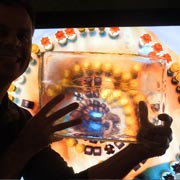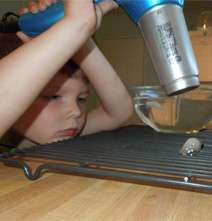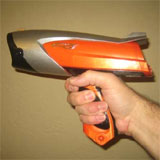How Ice Rinks are Made
Back in November, I caught Brian from Studio 33 setting up the outdoor ice skating rink in Folsom.

His crew was painstakingly inspecting a series of tubes moments before they began filling it up with liquid refrigerant. They are on their knees on the right hand side of this photo.
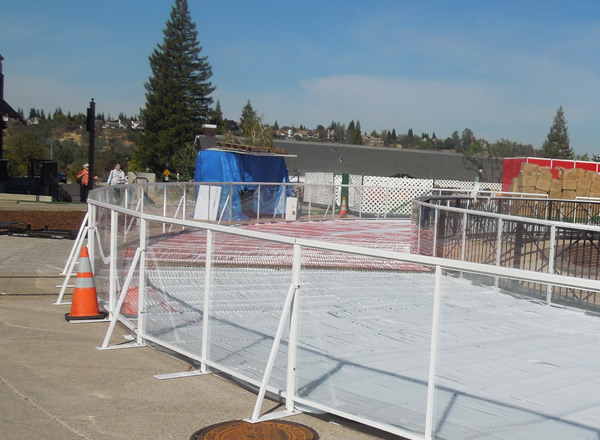
Here comes the red propylene glycol.

I asked him some questions about the engineering involved. I didn't realize that the rink was a rare configuration, a circle. Typically skating rinks are long ovals, allowing some dead space, center ice, for experienced skaters to try their leaps and spins. The circle meant that he'd had to re-configure the typical plumbing layout used on outdoor, artificial ice rinks.

These white spacers kept the tubes apart and kept them from resting on the surface plastic.
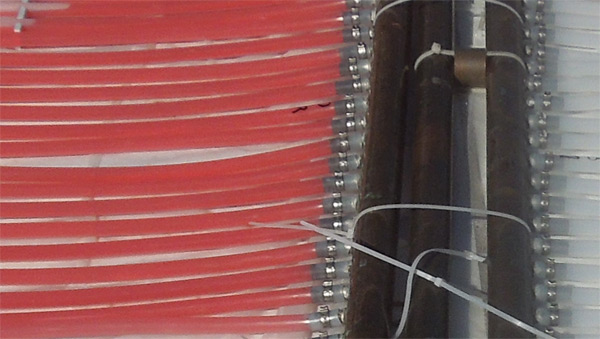
The ice was to be kept frozen with very cold liquid flowing inside the tubes. There was 40,000 ft of tubing in the rink, filled with 1,620 gallons of water mixed with propylene glycol to a 35% solution. These were the numbers off of the top of his head, but 5 ounces per foot of tube sounds about right to me.

The rink space had been prepared with ducting which ran under the ring of the rink.
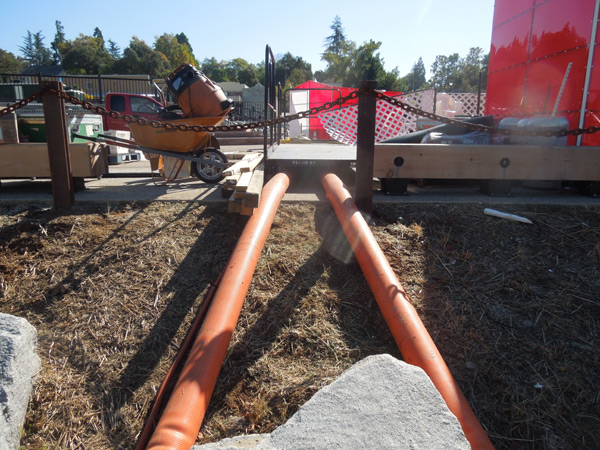
One of these 8" tubes was the path from the truck, one was the path back to the truck.
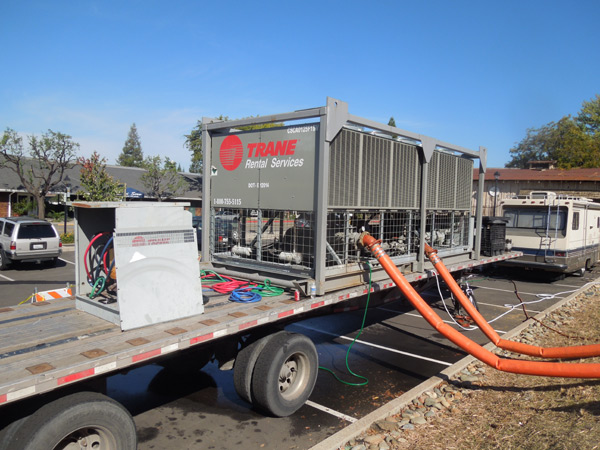
The ice rink is supported by two large motors mounted on trucks. One is the pump, and one is the freezer. The pump pushes the coolant around the tubing at about 70 gallons per minute. That means that the entire volume of coolant can be recirculated every 23 minutes. The cooler is set to keep the fluid between 14°F and 22°F.
One of the engines is a 275 amp, three phase motor. I think this figure was for the compressor for the freezer, but it might be the pump.
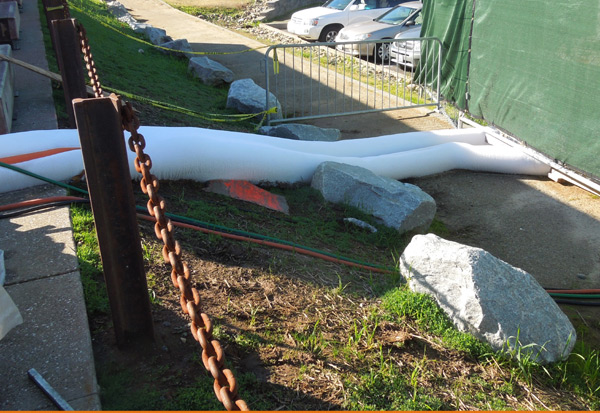
Soon afterwards, the cooler was running, and the surface of the orange tubes started to collect condensation and freeze it. I snapped these photos days afterwards, so I don't know how long it took for them to freeze up.
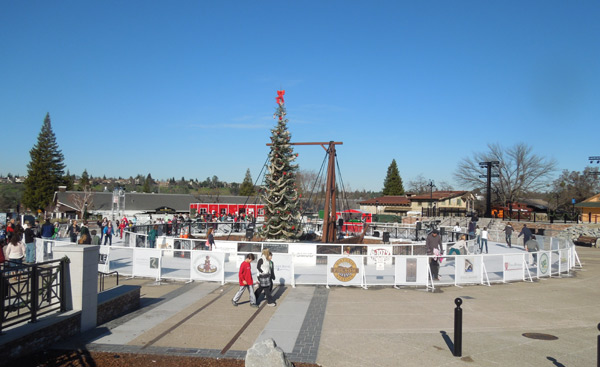
The ice rink in operation, on a Monday afternoon.

Here is a side view from outside the rink. The ice looked about five inches thick, but some of that is probably a layer of styrofoam insulation. The ice has to be thick enough to support a small Zamboni, one of those ice-smoothing tractors.

It was a fairly simple concept, in a grand scale. It worked well! The Folsom Historic District Ice Rink is $10 for adults, $8 for kids. Open until January 23, 2013.
Cockeyed home page | Contact | Terms and Conditions | Updated January 12, 2012 Copyright 2012 Cockeyed.com






